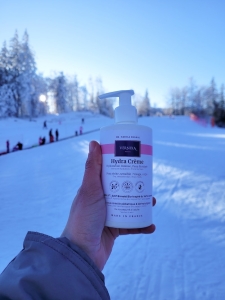Reading Time: mins
Melasma, that aesthetic scourge also known as pregnancy mask, has long frustrated those it affects. Its appearance, often linked to hormonal causes or excessive sun exposure, presents dark pigmented spots mainly on the face. On the one hand, this skin condition mainly affects women, exacerbating problems of self-esteem. On the other hand, advances in scientific research offer a glimmer of hope to sufferers, in the form of effective, innovative cosmetic active ingredients.
The fight against melasma is not a simple task; it's a real crusade that requires perseverance and precision. Drawing on the latest scientific advances, cutting-edge cosmetic active ingredients are bursting onto the market, promising targeted action against these stubborn spots. The formulations we've developed incorporate components whose efficacy has been rigorously tested, opening the door to a new era in the fight against melasma.
Niacinamide, also known as vitamin B3, has become a mainstay in the care of melasma-prone skin. Its multifaceted action includes reducing inflammation, improving the skin barrier and having a notable influence on reducing hyperpigmentation. Its ability to inhibit the transfer of melanosomes to keratinocytes makes it an indispensable element in any formulation designed to lighten the skin.
Tranexamic acid represents a significant breakthrough in the treatment of melasma. Traditionally used to control bleeding, this acid has revealed its capabilities in the aesthetic field through its specific action on the inflammatory mechanisms that fuel the melanogenesis process. Its ability to reduce the appearance of epidermal melasma without the side effects of more aggressive treatments puts it at the heart of recommendations.
Considered a breakthrough in the field of depigmentation, alpha-arbutin acts as a competitive inhibitor of tyrosinase, the keystone of melanin synthesis. Its effectiveness is based on a gentle yet powerful action, offering a welcome alternative to more aggressive depigmenting agents. This characteristic makes it a component of choice in anti-melasma treatment strategies.
The combination of azelaic acid and vitamin C illustrates innovation in the treatment of melasma. Azelaic acid, derived from natural grains, acts by inhibiting melanin synthesis, while vitamin C has antioxidant properties that protect the skin from damage caused by free radicals. Together, they have formulated a two-pronged approach aimed not only at reducing hyperpigmentation, but also at preventing it from occurring in the first place.
Navigating the complexities of melasma treatment requires more than sheer willpower; it requires an in-depth knowledge of cosmetic active ingredients and their specific action on the skin. Thanks to ongoing innovations in this field, individuals affected by this condition now have powerful, targeted solutions to restore radiant, even skin.
Vernixa is committed to providing skin-friendly products, enriched with these active ingredients, suitable for all skin types, including the most sensitive.
Visit Vernixa.com to explore our collection and learn how to incorporate these miracle ingredients into your skincare routine.
All Rights Reserved | Tous Droits Réservés GTIN Compliance Hydra Lavant | GTIN Compliance Hydra Crème



